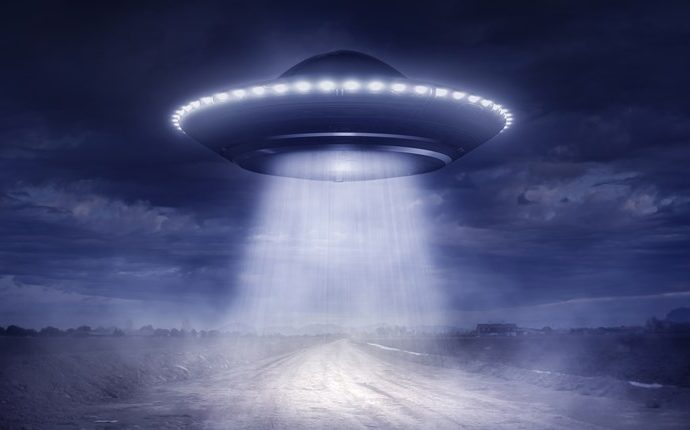The government did have a secret program to investigate odd aerial phenomena, but that doesn’t mean UFOs are alien spacecraft.
The past few weeks have been good for UFO believers. For decades they’ve clamored for “disclosure” — an admission by the government that it knows of galactic gatecrashers, and that aliens are irrefutably here. This always struck me as a classic argument from ignorance: We lack good evidence to prove our case because it’s been hidden.
That wouldn’t work in the courts or in science, but hey, it kind of sounds good.
Well, it turns out something was hidden. In 2007 Senator Harry Reid initiated a secret Pentagon program to investigate strange aerial phenomena. It ran for five years and cost $22 million. Finally, the skeptics — those who doubt that we’re hosting extraterrestrial visitors — had been shown the error of their disbelieving ways.
Except that the Pentagon study seems to have found no good evidence for visitors. Yes, there was an intriguing military video purportedly showing a cluster of alien craft. But when I watched it, I noticed that the cluster was always in the center of the field of view — which suggests that these “craft” were actually caused by the instruments aboard the plane rather than something in the airspace in front of it. Experts will undoubtedly weigh in.
What would be good evidence of alien presence? Nearly every day I receive an email or phone call from someone who claims to have seen “something very important” (which I’ve learned from experience is code for “UFO”). They want to chat.
So what do I do? First off, I generally dismiss witness testimony, or, put another way, stories. It’s not that I think people are lying. But if someone tells you he saw a ghost at the mall, you’ll have a hard time doing much with that information unless ectoplasm hangs out there on a regular basis.
Witness testimony isn’t terribly reliable in criminal court cases. It’s even less useful for science.
So I ask about physical or photographic evidence. There never seems to be any of the former, but often there is imagery. Some folks won’t send it, apparently afraid that I’ll sell their pix and deprive them of a Nobel Prize or a photo royalty. The photos I do see tend to show obvious optical effects — often bright lights caused by internal reflections in the lens or color fringes resulting from the workings of the camera’s chip. Other photos show diffraction patterns caused by “hunting” of the camera’s autofocus system. Many people interpret these patterns as spacecraft markings.
A lot of the images are shot at night, making them particularly hard to interpret. Perhaps daylight is too dangerous for aliens, because then it might be possible to see detail in photos taken of them. I wonder if, when the sun is shining, they hang out underground like bats.
I’m also wary of anthropomorphic touches — for example, when someone says, “They seemed friendly and just want to establish contact” or “They’re buzzing our missile silos.” The latter is particularly goofy. Any aliens who come from the stars are way ahead of us. If you could visit America 150 years ago, would you spend time inspecting the Union Army’s cannon-making factory at Pittsburgh’s Allegheny Arsenal?
Hoaxes — and of course there are some — don’t seem to be common. The people who contact me all sound pretty sincere. But the one UFO claim that has zero worth for me is: “I know what I saw.” After all, if that’s what someone asserts, there’s no room for discussion.
More than anything, I ask myself if the extraterrestrial explanation is compelling — or merely possible. Is the evidence proof-positive or only puzzling? The latter isn’t good enough.
Personally, I’m mystified by the stage illusions of David Copperfield. Did he really walk through that giant fan, or is that only a possibility? Just because I don’t know what really happened is hardly reason to conclude that he can saunter through whirling metal blades without chopped Copperfield flying into the audience.
The Pentagon study is certainly interesting, but not because it proves alien visitation. Of course, you can be sure that the “disclosure” folks will soon be claiming that UFO evidence is still being covered up. Conspiracy theories never end.
In the era of Google Earth, when every square yard of the continents has been photographed and put online, it’s hardly surprising that we have an unsatisfied craving to explore the unknown, to do what Columbus, Magellan, Cook, and others did a half-millennium ago.
Of course, in the 21st Century, a sailing vessel may no longer satisfy that need. A sailing saucer just might.
Source: NBC News

































Leave a Comment
You must be logged in to post a comment.